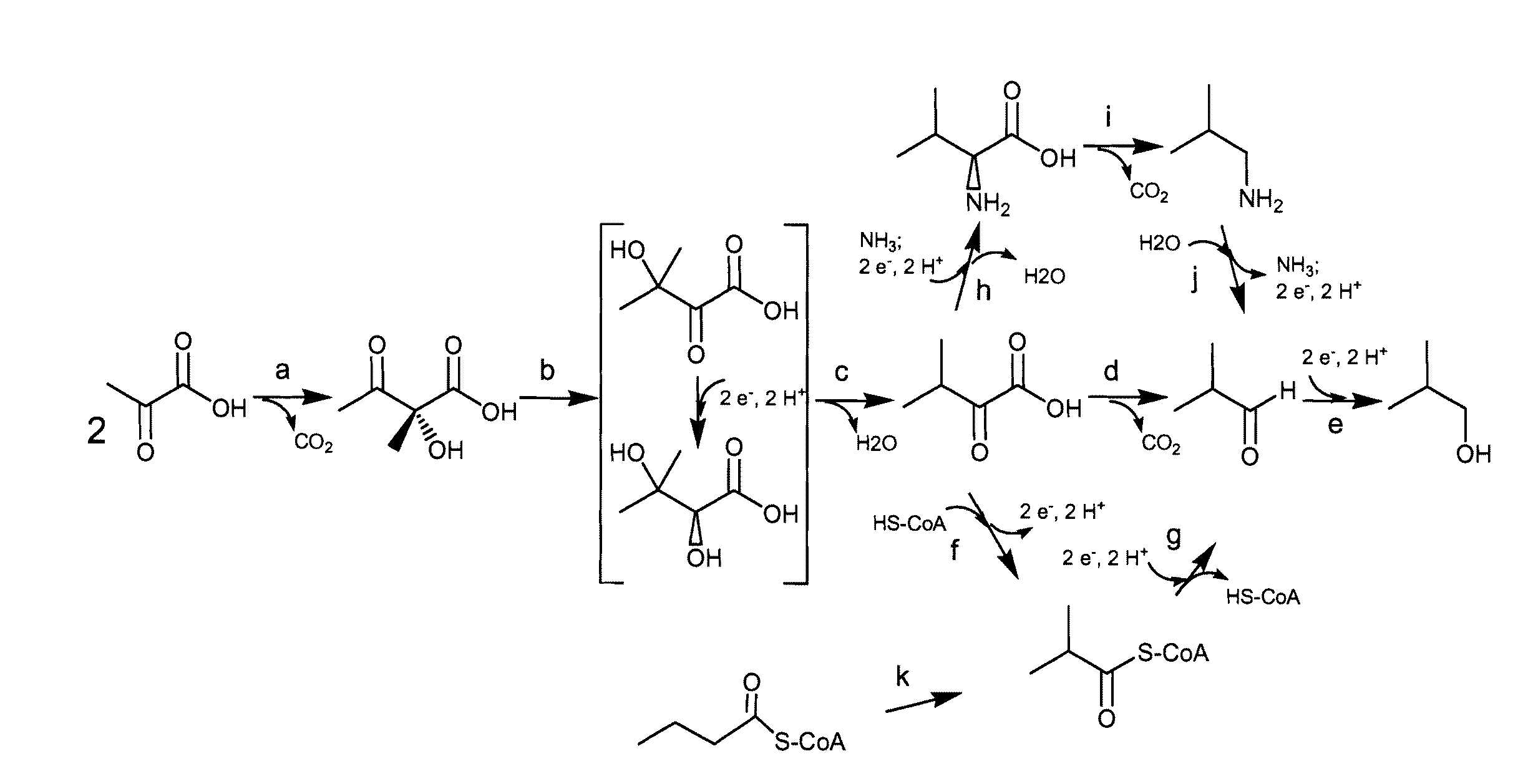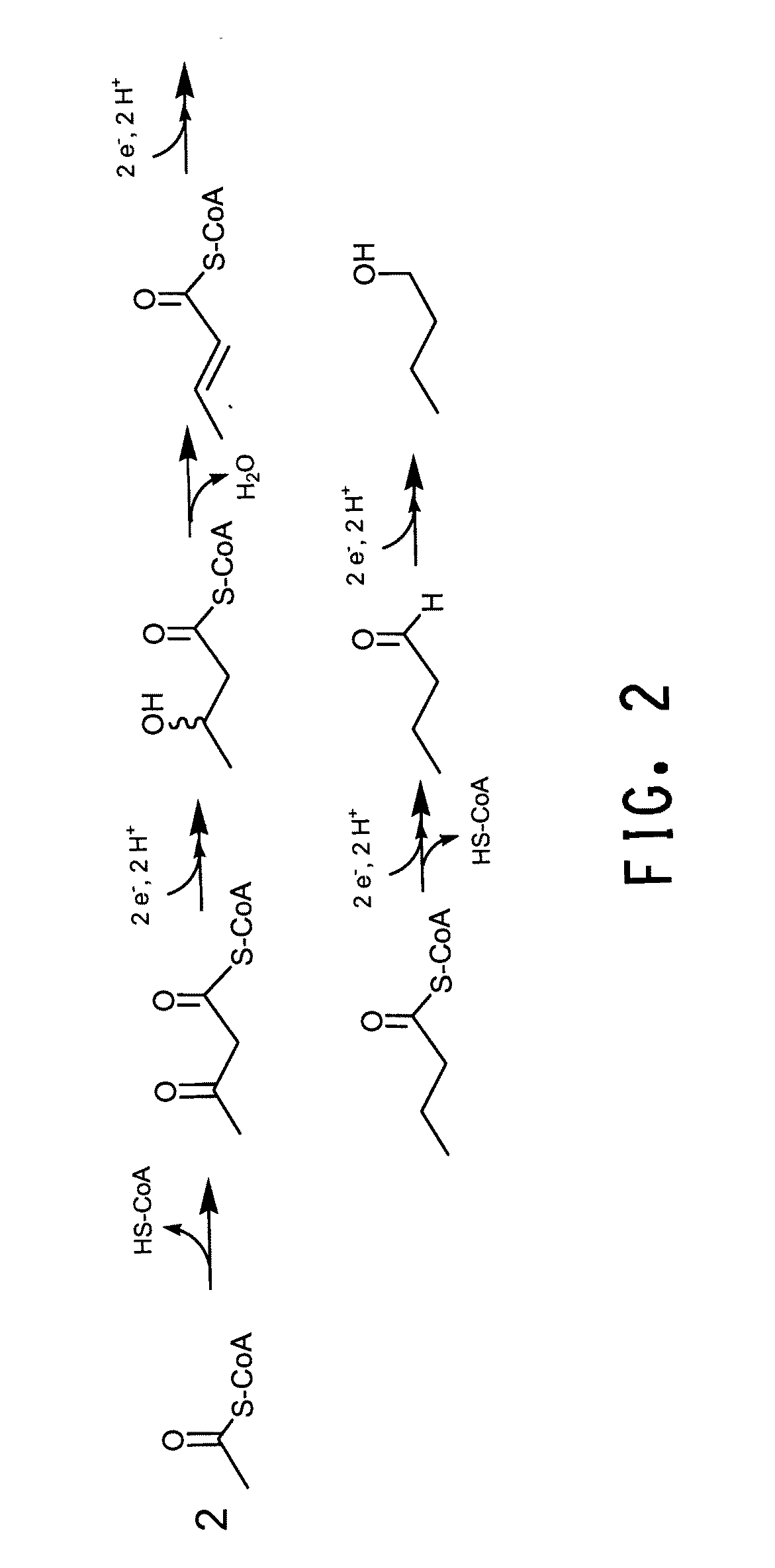Yeast with increased butanol tolerance involving cell wall integrity pathway
- Summary
- Abstract
- Description
- Claims
- Application Information
AI Technical Summary
Benefits of technology
Problems solved by technology
Method used
Image
Examples
example 1
Identification of SLT2 from an Isobutanol Tolerance Screen
[0159]A yeast genomic library in the E. coli / yeast shuttle vector YEp13 was obtained from the American Type Culture Collection (ATCC 37323; Reed et al. (1989) J. Cell Sci. Suppl. 12:29-37). The library was provided in an E. coli host and supplies complete coverage of the Saccharomyces cerevisiae genome with 10,000 clones containing random and / or overlapping fragments of genomic DNA. The YEp13 vector includes a leu marker. The library was amplified by growth of the E. coli mixed culture in LB with ampicillin (50 μg / ml) for 16 hours at 37° C. with shaking, isolated from E. coli using a Qiaprep Spin Miniprep Kit (Cat. No. 27104) and transformed into S. cerevisiae BY4741 cells (ATCC 201388) using a lithium acetate transformation procedure (Gietz et al. (1995) Yeast 11:355-360). Transformants were washed from selection plates (SD Agar minus leucine, called CSM-Leu; Cat #YPL-1540 of KD Medical; Columbia, Md.) and combined to form a...
example 2
Isobutanol Sensitivity of SLT2 Deletion Strain
[0168]A strain of diploid BY4743 having homozygous deletion of the SLT2 gene from the collection described by Brachmann et al. (Yeast (1998) 14:115-132) was assayed for sensitivity to isobutanol. The Δslt2 strain was plated on YPD medium and incubated for 3 days at 30° C. Colonies were picked and used to inoculate complete synthetic medium with glucose (2%) as the carbon source. They were diluted in the same medium to an OD600 of 0.01. 2 ml aliquots of this suspension were appended with pure isobutanol to the concentrations indicated in Table 5. Cultures were agitated on a roller drum at 30° C. for 2 days. Cultures were tested for growth yield after 1 and 2 days, assayed in triplicate. 1 day (20 hr) data is provided in Table 5.
TABLE 5Growth of Δslt2 strain in isobutanol.[ISO]OD (A600)(wt %)BY4743Δslt2 / Δslt20.00>1>10.25>10.070.50>10.030.750.070.030.870.070.011.000.040.011.250.020.021.500.040.02Both data sets indicated that the homozygous ...
example 3
Overexpression of SLT2 Coding Region
[0169]The effect of overexpression of the SLT2 coding region was assessed as follows. A Yeast ORF collection (Gelperin, White et al. (2005) Genes Dev. 19(23):2816-2826)_is available from Open Biosystems (Huntsville, Ala.). In this collection yeast ORFs are expressed from the GAL1 promoter in the vector BG1805. This vector can be introduced into ura3 yeast mutants and transformants selected for uracil prototrophy. In the presence of galactose and the absence of glucose, expression from the GAL1 promoter is elevated about 1000 fold relative to the barely detectable level observed with glucose grown cells (Johnston and Davis (1984) Mol. Cell. Biol. 4(8):1440-1448). Note that each ORF encodes a fusion protein of the form:
[0170]N terminal yeast ORF-C terminal epitope tag
[0171]A plasmid containing the SLT2 ORF was obtained from this collection (YSC3867-9522814) and transformed into yeast strain BY4741 selecting for uracil prototrophy. To measure the eff...
PUM
| Property | Measurement | Unit |
|---|---|---|
| Fraction | aaaaa | aaaaa |
| Fraction | aaaaa | aaaaa |
| Fraction | aaaaa | aaaaa |
Abstract
Description
Claims
Application Information
 Login to View More
Login to View More - R&D
- Intellectual Property
- Life Sciences
- Materials
- Tech Scout
- Unparalleled Data Quality
- Higher Quality Content
- 60% Fewer Hallucinations
Browse by: Latest US Patents, China's latest patents, Technical Efficacy Thesaurus, Application Domain, Technology Topic, Popular Technical Reports.
© 2025 PatSnap. All rights reserved.Legal|Privacy policy|Modern Slavery Act Transparency Statement|Sitemap|About US| Contact US: help@patsnap.com



